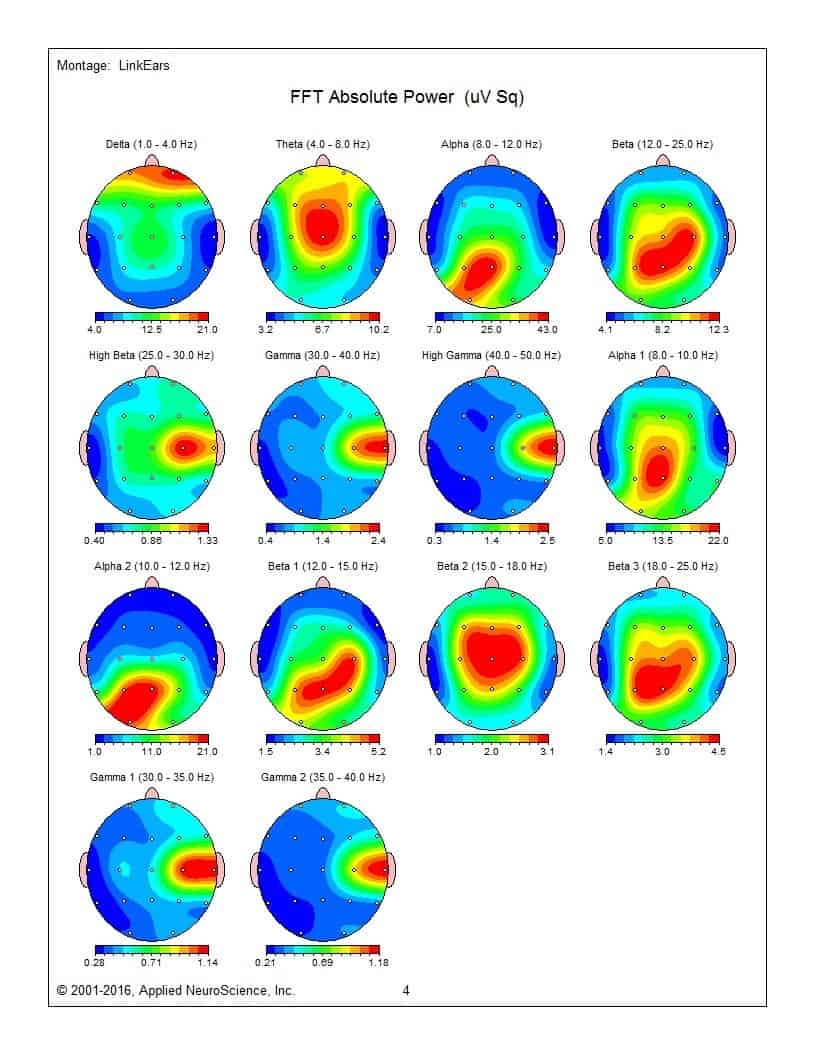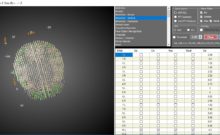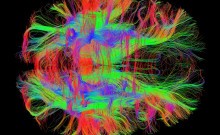QEEG (quantitative electroencephalography) is the analysis of the spontaneous electrical activity of the brain or brain waves, recorded from multiple electrode sites on the surface of the scalp over a period of time. The process is also called brain-mapping. QEEG uses modern analytical software to compare the recordings with the reference values from healthy individuals with no history of concussion or known symptoms. The analysis gives us the ability to view the dynamic changes throughout the brain and to understand which areas of the brain are engaged and processing efficiency and which areas are not.
Large-scale brain network research suggests that focus, for example, is the result of communication between and among different brain nodes distributed throughout the brain. That is, when performing a particular task, just one isolated brain area is not working alone. Different regions of the brain, often far apart from each other within the 3D space of the brain, are communicating through a fast-paced and synchronized set of brain signals. These networks can be considered preferred pathways for sending electrical messages back and forth to perform a particular set of cognitive or motor tasks.
QEEG brain mapping enables us to see the unique pattern of mental strengths and weaknesses. We are able areas of the brain with too little or too much activity and those coordinating their activity with each other. The accuracy of a qEEG in identifying areas of brain activity is comparable to a functional MRI.
During a typical qEEG session, the client wears a cap that resembles a swimmer’s cap. The cap has electrodes that pick up brain waves and send them into an amplifier that measures the amplitude (power of the brain-wave activity), the coherence (quality of the synchronized communication), and the phase (the speed of communication) between and among regions of the brain.
One of the most exciting developments in contemporary neuroscience is the recognition that the human brain processes information via different brain circuits or loops. The collection of circuits working together is called a brain network. Using LORETA—software approved for academic research, a qEEG allows us an unprecedented look into the brain-wave patterns from deep brain structures, Identifying these circuits and loops and then train the person to improve those.
For example, if you have a specific difficulty with foggy brain and difficulty focusing on a task after a concussion, a qEEG can map the brain areas involved in attention and executive functioning and see which brain regions are functioning outside the norm.
For the first time we are able to both identify and train the deeper structures in the brain, and this is a significant leap forward in brain training. Combined with 3D LORETA neurofeedback training, the qEEG can then be used to augment the brain activity to achieve remarkable improvements in symptoms.




